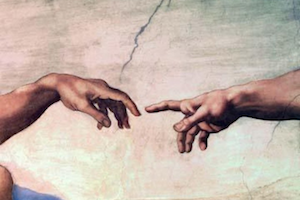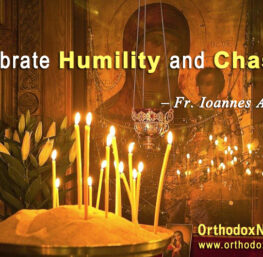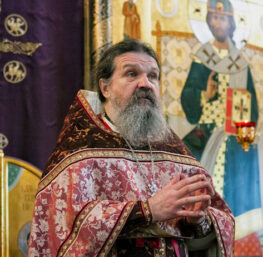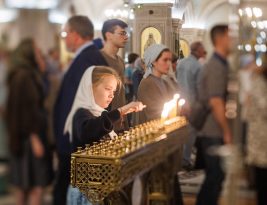 by Art Lindsley –
by Art Lindsley –
The number one fear of the millennial generation is living a meaningless life.
In a recent informal survey of undergraduate students at Regent University, 27 percent of students asked expressed anxiety when considering their vocation. “Scared,” “uneasy,” “unsure,” “confused,” and “apprehensive” were common words in describing the way they felt about their future vocation.
But college students aren’t the only ones struggling with their calling. Many adults fail to discover their calling in life, too. Why is it so hard to find this thing we call our “vocation”?
When I use the words “calling” and “vocation,” I am referring to what Os Guinness calls our secondary calling. As Guinness points out, along with Luther, Calvin, and many other Reformers, our primary calling is the call to faith in Christ. Several secondary callings flow from this primary calling, including the call to work.
Every person is created in the image of God, full of dignity, with unique talents and gifts to use for the glory of God in their work. Many Christians fail to discover their vocation because they don’t fully understand what it means to be made in the image of God.
Imago Dei
Christians have heard theologians and pastors say over and over again that we’re all made in the image of God, but what does this mean? It’s a complex idea.
The image of God is a foundational concept for understanding our significance and purpose in life. Understanding how we are made in God’s image helps us understand our inherent dignity as a human being created by our heavenly Father.
Genesis 1:26-27 tells us that human beings are made in the image of God:
Then God said, “Let us make man in our image, after our likeness. And let them have dominion over the fish of the sea and over the birds of the heavens and over the livestock and over all the earth and over every creeping thing that creeps on the earth.” So God created man in his own image, in the image of God he created him; male and female he created them.
From these verses, we understand that our worth is connected to our Creator. If God is of great and inestimable worth, then human beings made in his image must have immense value too.
The image of God in us survives our fall into sin. For example, in Genesis 9:6, God reminds Noah that man is made in God’s image:
Whoever sheds the blood of man, by man shall his blood be shed, for God made man in his own image.
In other words, this verse tells us, “To attack a person is to attack God through his image bearer.” Though mankind is tainted by sin, sin does not eradicate the doctrine of the Imago Dei.
We are also told again in the New Testament that human beings are made in God’s image. James 3:9 says,
With [the tongue] we bless our Lord and Father, and with it we curse people who are made in the likeness of God.
So how we treat people indicates how we value God.
One of my favorite quotes from C. S. Lewis appears in his book The Weight of Glory: “There are no ordinary people. You have never met a mere mortal.” The people you see every day, even the ones to whom you give little regard, will live forever either under salvation or judgment. Even the most obscure person is not ordinary in God’s eyes.
In light of this truth, how do we affirm the dignity of the people around us?
Fallen, Yet Redeemed
Today, some Christians focus on our dignity and self-worth without much mention of our sinfulness. Others emphasize our utter unworthiness and sinfulness without much reminder of our dignity or God’s grace.
We should not focus on our sin for long without also noting God’s grace and our God-given dignity. For the apostle Paul, the depth of sin leads to rejoicing in God’s grace: “For I am the least of the apostles, unworthy to be called an apostle. . . . But by the grace of God I am what I am, and his grace toward me was not in vain” (1 Cor. 5:9-10).
In 1 Timothy 1:16, Paul calls himself the foremost of sinners but also notes that he received mercy for this reason, that “Jesus Christ might display his perfect patience.”
We can say the same. No matter what we have done, God’s grace works in us. To deny or fail to acknowledge this truth is to say that God’s grace is in vain. Certainly it is right to take time for self-examination, confession, and repentance. But we should eventually come back to God’s grace and our own dignity from being made in the image of God.
The Restored Image of God Looks Like Christ
While the image of God remains after the Fall, it is certainly marred and defaced. As we are redeemed, what will we look like when the process is completed?
As God restores us, our unique design in the image of God will shine even more brightly, and our gifts will reach their full potential. We will also look like Christ. Romans 8:29 reminds us that we are being “conformed to the image of his Son.” Jesus is the perfect representative of the image of God, and we are being made like him.
Being made in the image of God provides the basis for our work and vocation. If we are made in the image of God, we share his characteristics. For example, because God is creative, we can be creative in our work. Knowing the basis for our dignity and worth helps us understand we have gifts and talents to employ. I have conducted hundreds of vocational profiles with people who hadn’t discovered their calling because they didn’t think they had anything to offer. Often, traumatic events from their past have defined their identity and kept them from recognizing their dignity, worth, and God-given creativity.
Yet when they realized the implications of being made in God’s image, their outlook changed. I could see the change in their lives, as this truth—rather than their pasts—became the basis for their identities. As they understood what it means to be made in the image of God, these people began to believe they were unique and talented. They realized how God had gifted them, and used this knowledge to find their vocations.
Being made in the image of God is a powerful concept for finding our vocations and living a purposeful life.



